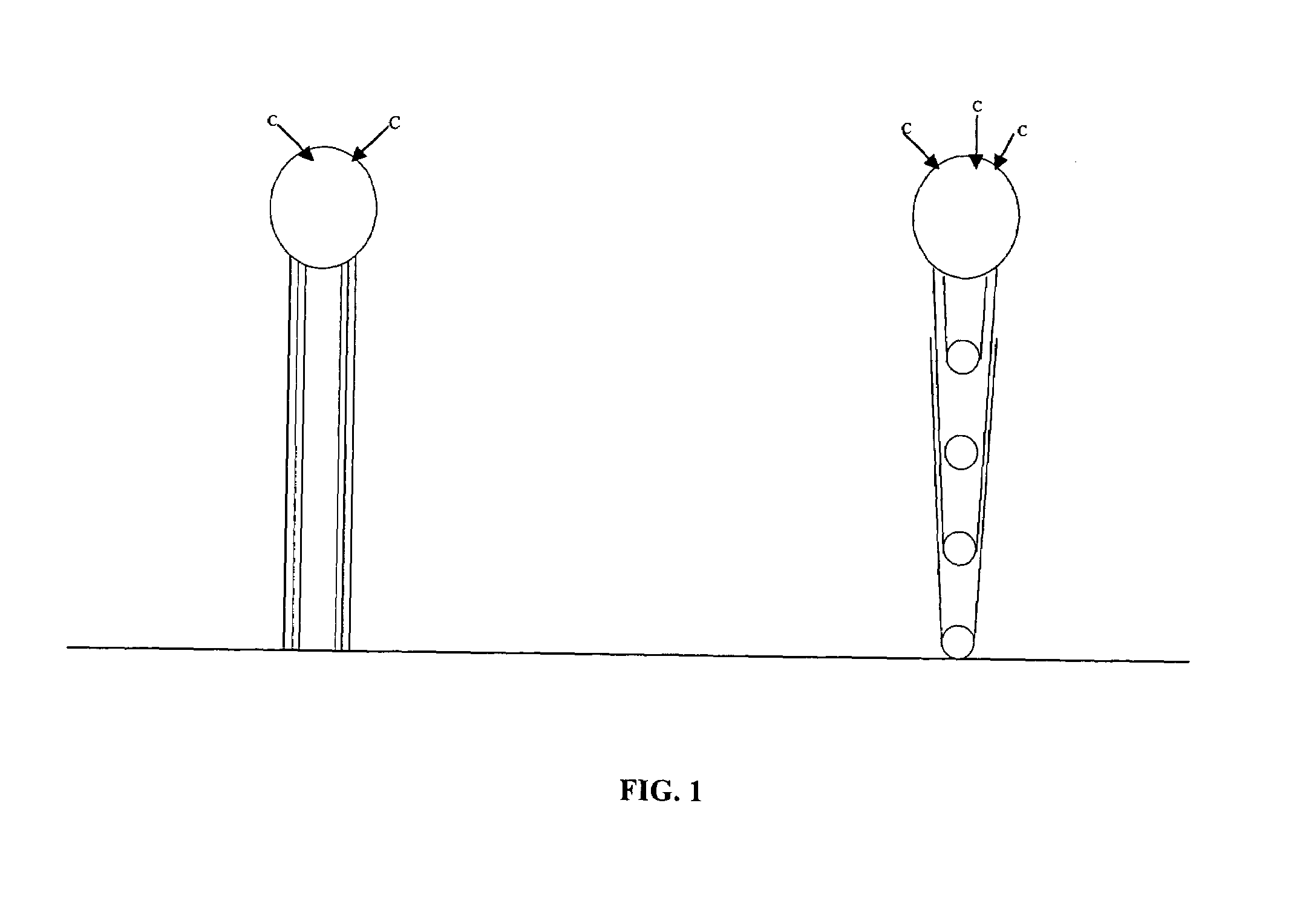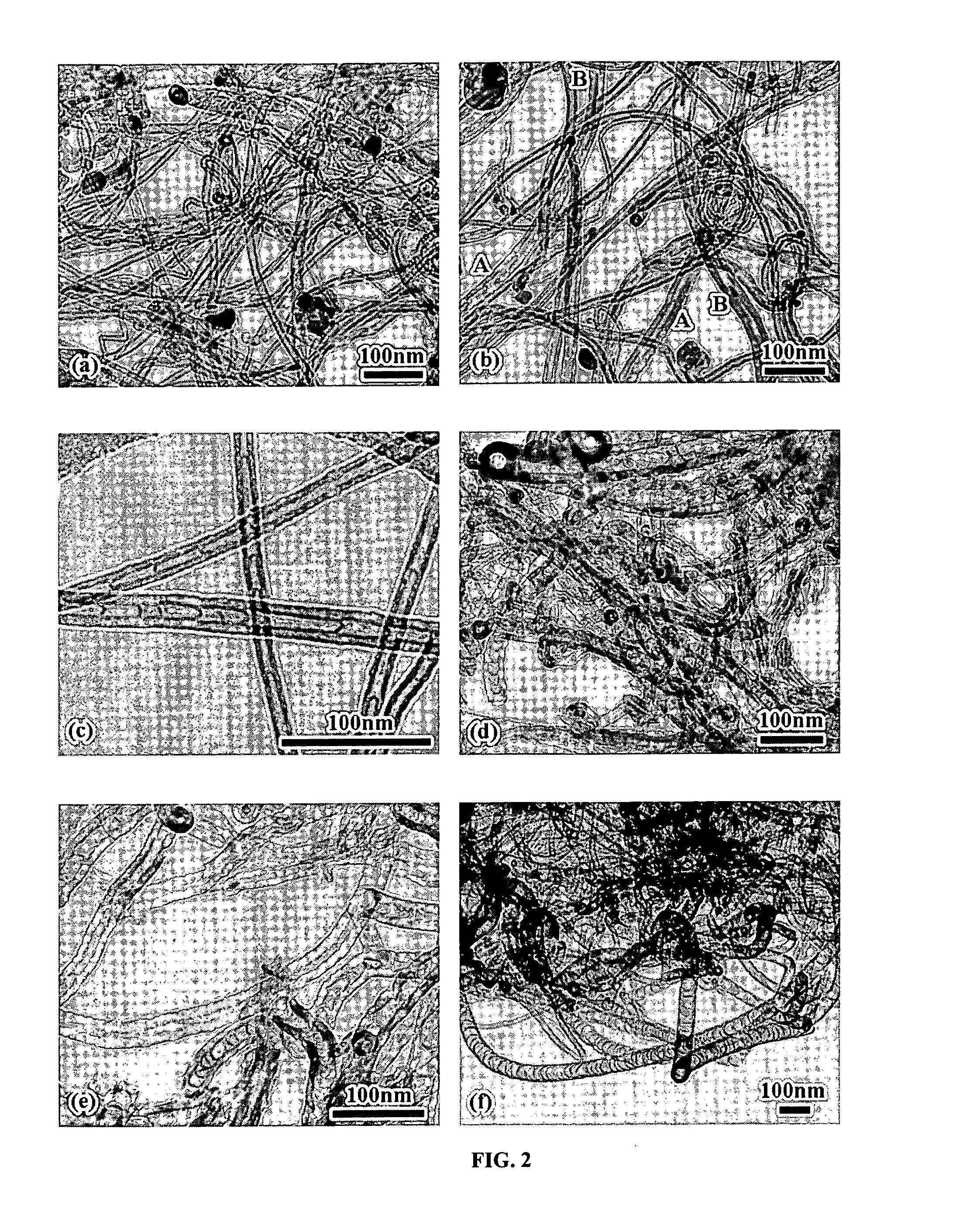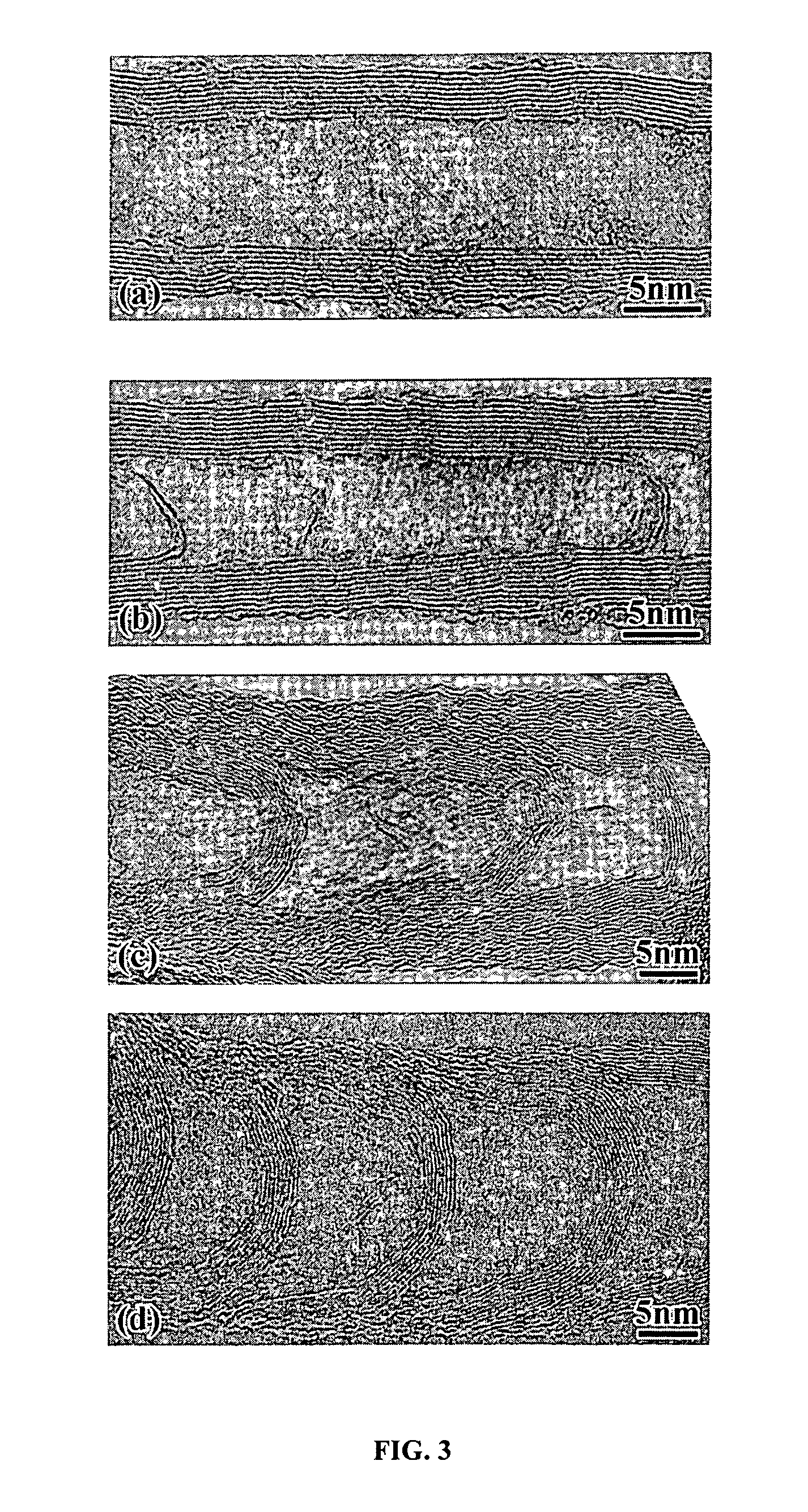Varied morphology carbon nanotubes and method for their manufacture
- Summary
- Abstract
- Description
- Claims
- Application Information
AI Technical Summary
Benefits of technology
Problems solved by technology
Method used
Image
Examples
example 1
Preparation of Catalyst Substrate for Synthesis of Linear CNTs
[0058]Mesoporous silica containing iron nanoparticles were prepared by a sol-gel process by hydrolysis of tetraethoxysilane (TEOS) in the presence of iron nitrate in aqueous solution following the method described by Li et al. (Science, (1996), Vol. 274, 1701–3) with the following modification. The catalyst gel was dried to remove excess water and solvents and calcined for 10 hours at 450° C. and 10−2 torr to give a silica network with substantially uniform pores containing iron oxide nanoparticles that are distributed within. The catalyst gel is then ground into a fine, micro-particulate powder either mechanically using a ball mill or manually with a pestle and mortar. The ground catalyst particles provide particle sizes that range between 0.1 and 100 μM under the grinding conditions.
example 2
Preparation of Catalyst Substrate for Synthesis of Branched CNTs
[0059]Magnesium oxide (MgO) supported cobalt (Co) catalysts were prepared by dissolving 0.246 g of cobalt nitrate hexahydrate (Co(NO3)2.6H2O, 98%) in 40 ml ethyl alcohol, following which immersing 2 g of particulate MgO powder (−325 mesh) were added to the solution with sonication for 50 minutes. The solid residue was filtered, dried and calcined at 130° C. for 14 hours.
example 3
General Synthetic Procedure for Linear CNTs
[0060]The synthesis of CNTs is carried out in a quartz tube reactor of a chemical vapor deposition (CVD) apparatus. For each synthetic run, 100 mg of the micro-particulate catalyst substrate was spread onto a molybdenum boat (40×100 mm2) either mechanically with a spreader or by spraying. The reactor chamber was then evacuated to 10−2 torr, following which the temperature of the chamber was raised to 750° C. Gaseous ammonia was introduced into the chamber at a flow rate of 80 sccm and maintained for 10 minutes, following which acetylene at a flow rate of 20 sccm was introduced for initiate CNT growth. The total gas pressure within the reaction chamber was maintained at a fixed value that ranged from 0.6 torr to 760 torr (depending on desired morphology for the CNTs). The reaction time was maintained constant at 2 hours for each run. The catalytic substrate containing attached CNTs were washed with hydrofluoric acid, dried and weighed prior ...
PUM
| Property | Measurement | Unit |
|---|---|---|
| Temperature | aaaaa | aaaaa |
| Temperature | aaaaa | aaaaa |
| Pressure | aaaaa | aaaaa |
Abstract
Description
Claims
Application Information
 Login to View More
Login to View More - R&D
- Intellectual Property
- Life Sciences
- Materials
- Tech Scout
- Unparalleled Data Quality
- Higher Quality Content
- 60% Fewer Hallucinations
Browse by: Latest US Patents, China's latest patents, Technical Efficacy Thesaurus, Application Domain, Technology Topic, Popular Technical Reports.
© 2025 PatSnap. All rights reserved.Legal|Privacy policy|Modern Slavery Act Transparency Statement|Sitemap|About US| Contact US: help@patsnap.com



